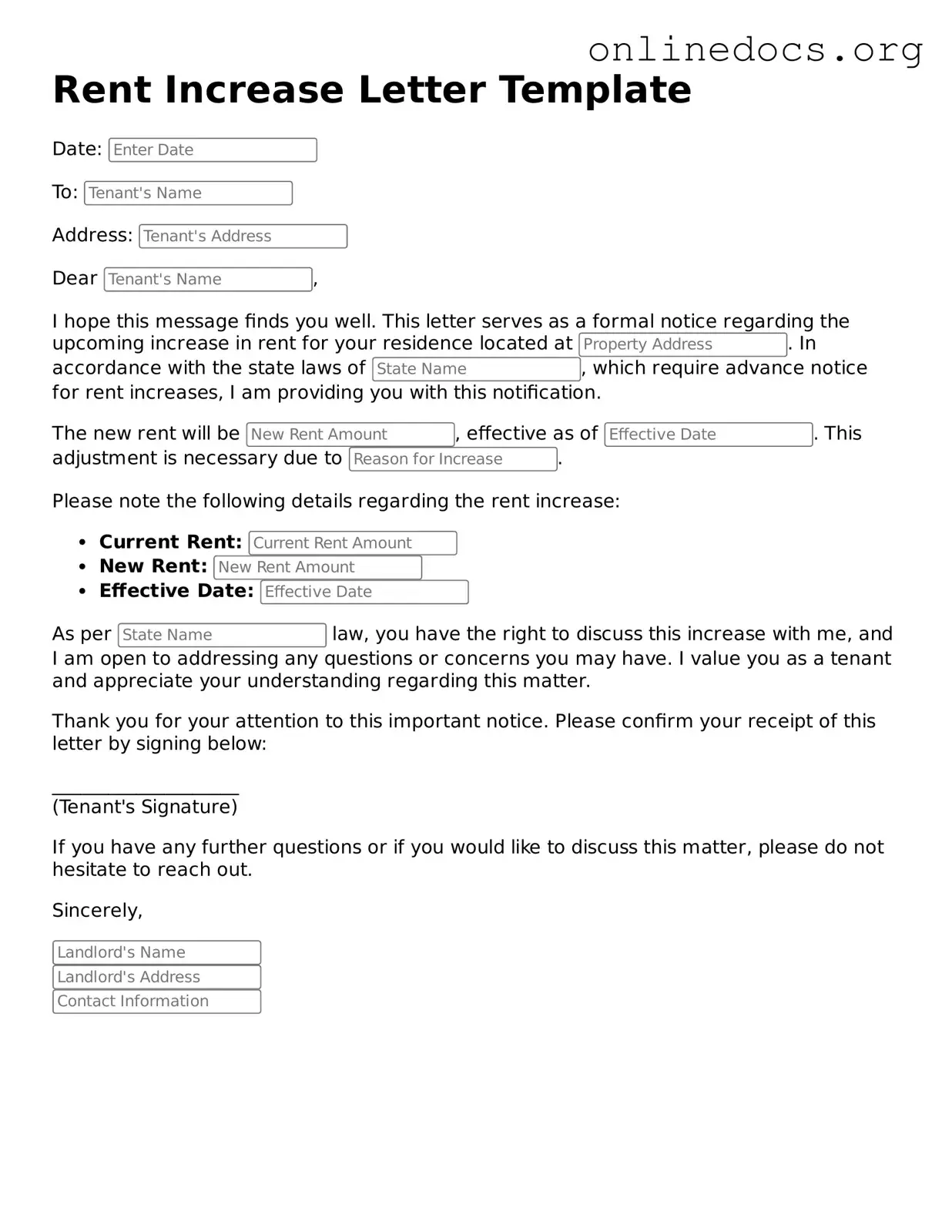The Notice of Rent Increase is a document that serves a similar purpose to the Rent Increase Letter. Both forms are used by landlords to inform tenants about an upcoming change in rental rates. Typically, this notice includes details such as the current rent amount, the new rent amount, and the effective date of the increase. Just like the Rent Increase Letter, it must comply with local laws regarding notice periods and any other specific requirements set forth by state or municipal regulations.
Another document that resembles the Rent Increase Letter is the Lease Renewal Agreement. While the Rent Increase Letter focuses on notifying tenants of a rent increase, the Lease Renewal Agreement outlines the terms of extending the lease, which may include new rental rates. This document often serves as a formal agreement between the landlord and tenant, ensuring that both parties are aware of the updated terms before continuing their rental relationship.
Understanding a comprehensive Lease Agreement is vital for both landlords and tenants, as it provides clarity on rental terms and conditions. For those seeking a sample, you can find a helpful resource at this Lease Agreement template.
The Rent Adjustment Notice is also akin to the Rent Increase Letter. This document is used when landlords need to adjust rent based on various factors, such as market conditions or property improvements. While it may not always signify a rent increase, it serves the same purpose of communicating changes to tenants. Like the Rent Increase Letter, it must be delivered within a specific timeframe and adhere to local regulations.
A Security Deposit Return Letter can be compared to the Rent Increase Letter in terms of communication between landlords and tenants. Although this letter deals with the return of a security deposit, it often includes details about any deductions made for damages or unpaid rent. Both documents require clarity and transparency, ensuring that tenants understand their financial obligations and the reasons behind any adjustments.
Lastly, the Eviction Notice shares similarities with the Rent Increase Letter in that both are formal communications from landlords to tenants. While the Eviction Notice typically indicates a termination of the lease due to non-payment or lease violations, it still requires clear language and adherence to legal guidelines. Both documents emphasize the importance of proper notification and provide tenants with essential information regarding their rental situation.
